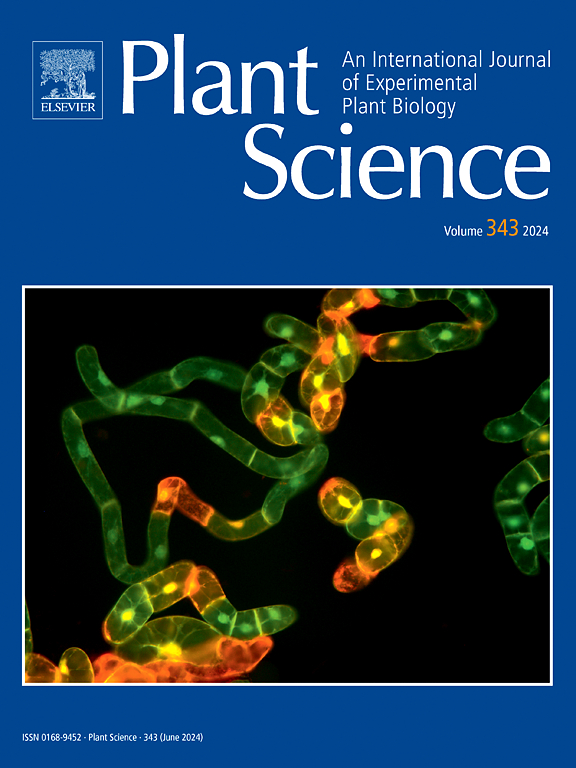PavSPLs 是甜樱桃生长、发育和应激反应的关键调节因子。
IF 4.2
2区 生物学
Q2 BIOCHEMISTRY & MOLECULAR BIOLOGY
引用次数: 0
摘要
SQUAMOSA PROMOTER BINDING PROTEIN-LIKE(SPL)基因是植物特异性转录因子,对植物的生长、发育和胁迫反应至关重要;然而,它们在甜樱桃中的作用还不是很清楚。在这项研究中,我们从甜樱桃基因组中鉴定并分离出 16 个 SPL 基因,将它们分为五个亚家族,其中 12 个 PavSPL 被预测为 miR156 的靶标。PavSPLs的启动子区域含有与光照、胁迫和植物激素反应相关的顺式元件,表明它们在生物过程和非生物胁迫反应中的作用。季节性表达分析表明,PavSPL 调节甜樱桃休眠后的恢复。赤霉素(GA)处理降低了 PavSPL 的表达,表明其在 GA 介导的过程中发挥作用。在拟南芥中过表达 PavSPL14 会导致提早开花、株高增加和生长增强。酵母双杂交实验发现 PavSPL14 与 DELLA 蛋白 PavDWARF8 之间存在相互作用,表明 PavSPLs 通过蛋白质相互作用参与了 GA 调控过程。这些发现为今后研究 PavSPL 在甜樱桃中的功能奠定了基础。本文章由计算机程序翻译,如有差异,请以英文原文为准。
PavSPLs are key regulators of growth, development, and stress response in sweet cherry
SQUAMOSA PROMOTER BINDING PROTEIN-LIKE (SPL) genes are plant-specific transcription factors essential for plant growth, development, and stress responses. Their roles in sweet cherry are not well understood. In this study, we identified and isolated 16 SPL genes from the sweet cherry genome, categorizing them into 5 subfamilies, with 12 PavSPLs predicted as miR156 targets. Promoter regions of PavSPLs contain cis-elements associated with light, stress, and phytohormone responses, indicating their role in biological processes and abiotic stress responses. Seasonal expression analysis showed that PavSPL regulates sweet cherry recovery after dormancy. Gibberellin (GA) treatment reduced PavSPL expression, indicating its role in GA-mediated processes. PavSPL14 overexpression in Arabidopsis thaliana resulted in earlier flowering and increased plant height and growth. Yeast two-hybrid assays showed an interaction between PavSPL14 and DELLA protein PavDWARF8, suggesting PavSPL14 and PavDWARF8 co-regulate growth and development. These findings lay the groundwork for further research on PavSPL function in sweet cherry.
求助全文
通过发布文献求助,成功后即可免费获取论文全文。
去求助
来源期刊

Plant Science
生物-生化与分子生物学
CiteScore
9.10
自引率
1.90%
发文量
322
审稿时长
33 days
期刊介绍:
Plant Science will publish in the minimum of time, research manuscripts as well as commissioned reviews and commentaries recommended by its referees in all areas of experimental plant biology with emphasis in the broad areas of genomics, proteomics, biochemistry (including enzymology), physiology, cell biology, development, genetics, functional plant breeding, systems biology and the interaction of plants with the environment.
Manuscripts for full consideration should be written concisely and essentially as a final report. The main criterion for publication is that the manuscript must contain original and significant insights that lead to a better understanding of fundamental plant biology. Papers centering on plant cell culture should be of interest to a wide audience and methods employed result in a substantial improvement over existing established techniques and approaches. Methods papers are welcome only when the technique(s) described is novel or provides a major advancement of established protocols.
 求助内容:
求助内容: 应助结果提醒方式:
应助结果提醒方式:


